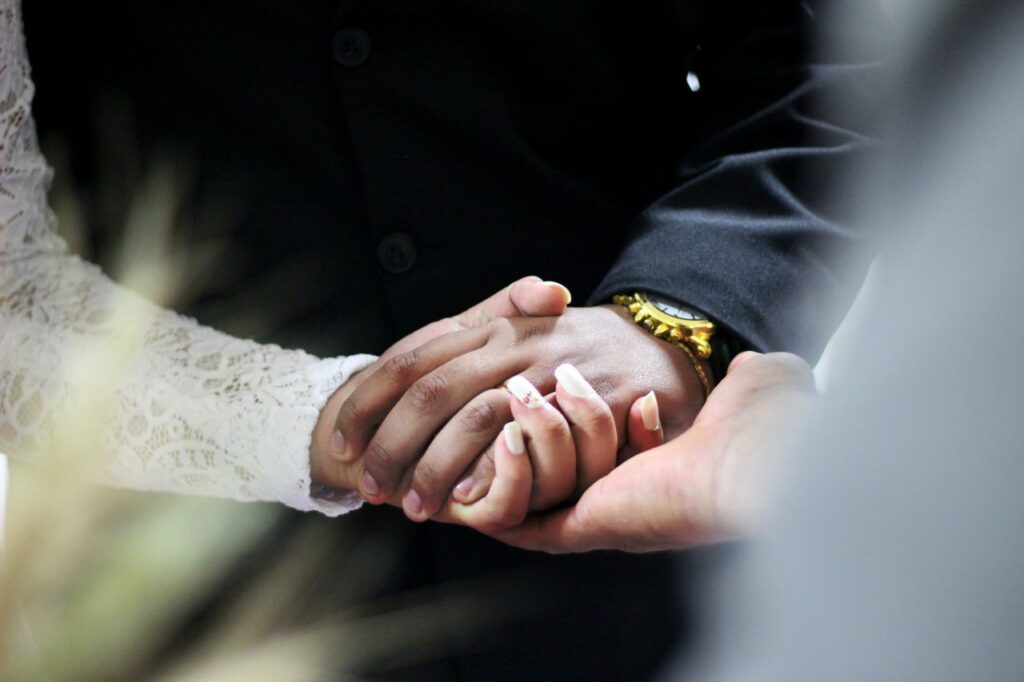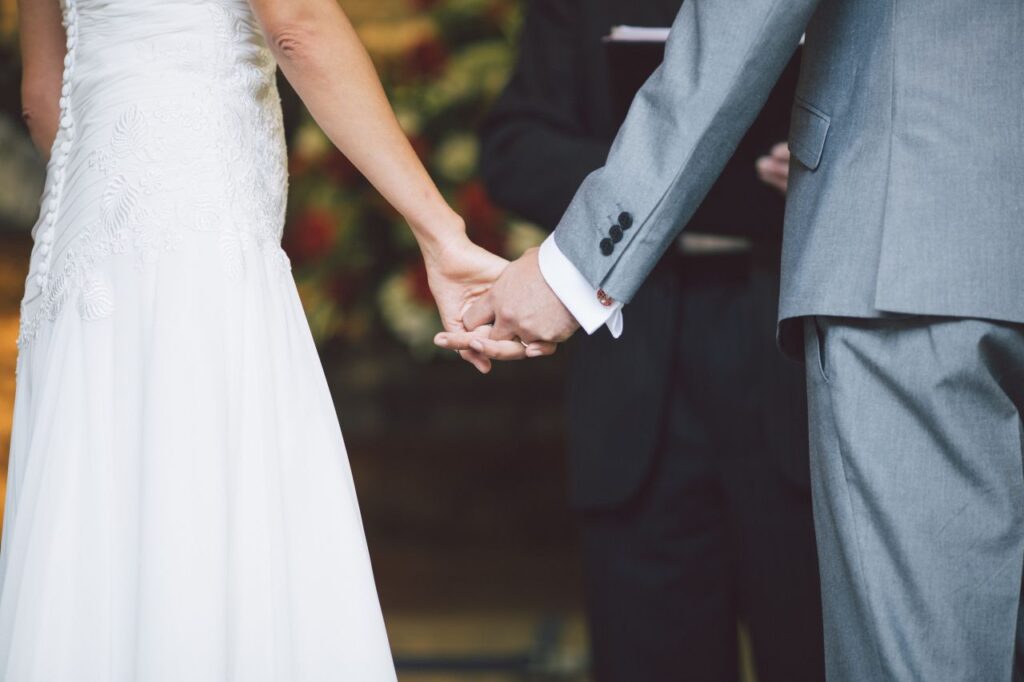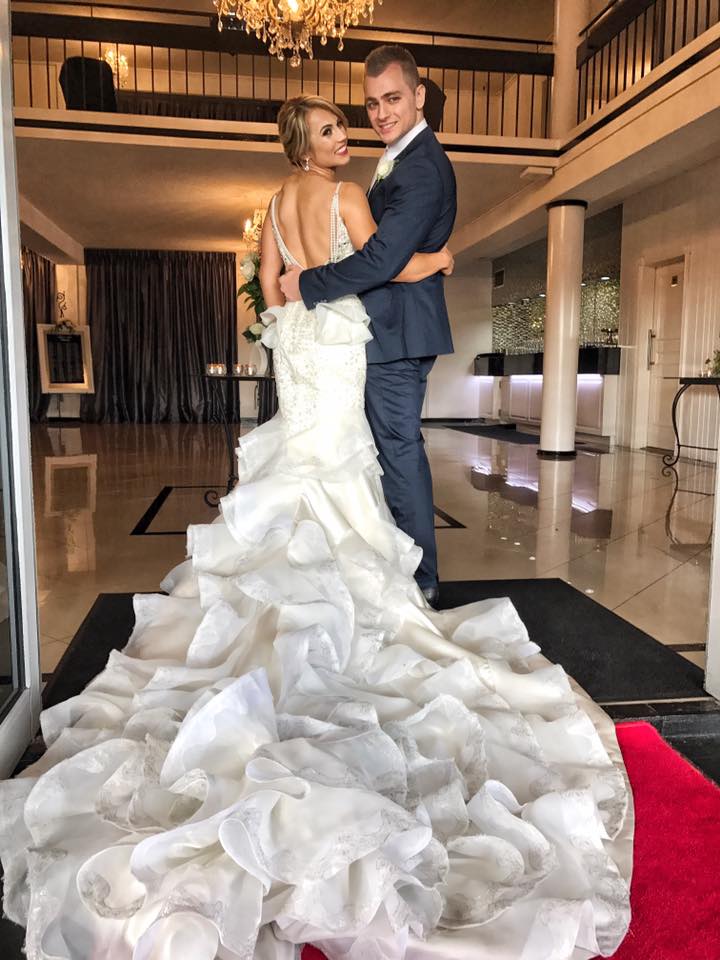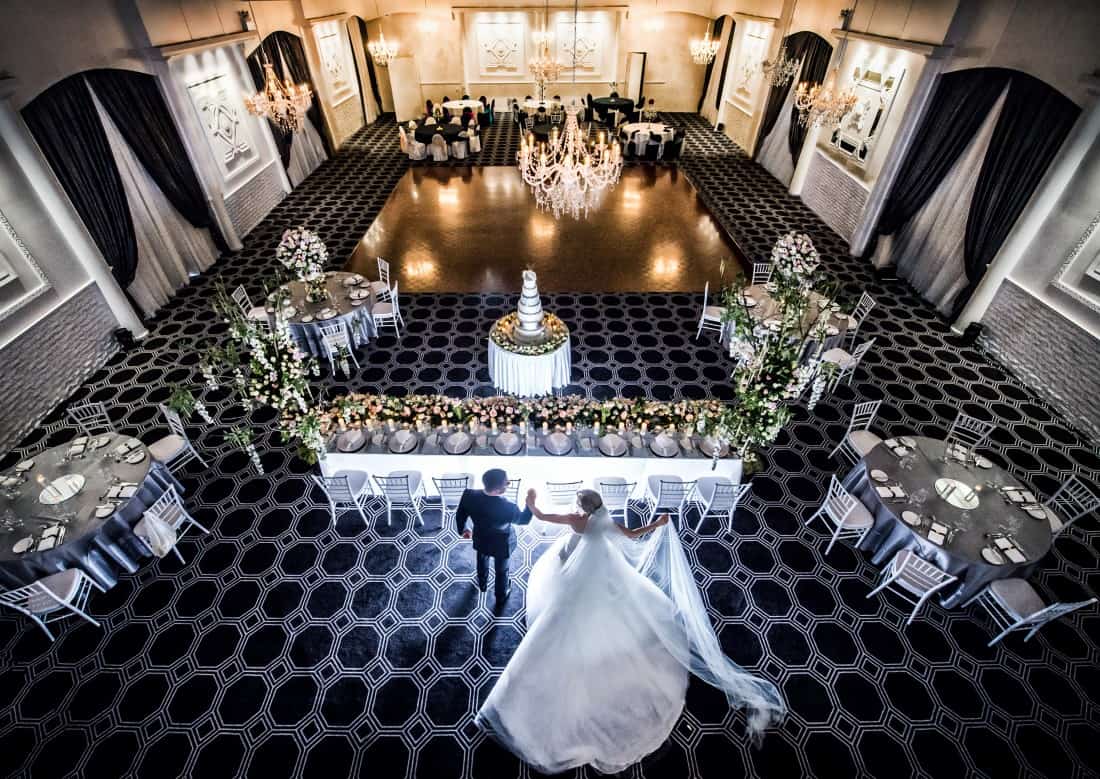A traditional Jewish wedding is steeped in rituals and customs that carry deep meaning and significance. From personal experience, having helped couples prepare for their own Jewish weddings, I’ve seen how these traditions come alive in a way that’s both spiritual and joyous.
Each step—from the ketubah signing to the breaking of the glass—tells a story, creating a memorable and meaningful day. Jewish weddings are not just about the union of two people but also about connecting with centuries of tradition, community, and faith. Let’s explore the key elements that make a Jewish wedding so unforgettable.
What Makes a Traditional Jewish Wedding Unique?
A traditional Jewish wedding is far more than just a celebration—it’s a spiritual journey. Having worked closely with many couples, I’ve witnessed firsthand how these deeply-rooted customs and rituals form the foundation of a wedding that is both meaningful and joyous. Here’s why a traditional Jewish wedding is so unique:
- A Sacred Union: In Judaism, marriage is seen as a divine commandment. The act of marriage creates a partnership that not only connects two individuals but also brings them closer to God. The wedding marks the beginning of a shared life under God’s guidance.
- Spiritual Journey: The ceremony is a stepping stone to a future filled with spiritual growth. For Orthodox Jews, marriage is a commitment to supporting each other’s personal and spiritual development, ensuring that the couple’s bond strengthens over time.
- A Strong Community Focus: Jewish weddings emphasise the importance of family and community. It’s not just about the couple; it’s about uniting two families and celebrating the joy of their union with everyone involved. The involvement of loved ones throughout the ceremony reflects the communal nature of Jewish life.
- Tradition Meets Personalisation: While Jewish weddings are rich in traditional rituals, they also offer flexibility for couples to make personal choices. Whether it’s an Ashkenazi, Sephardic, or Reform wedding, couples often incorporate customs that reflect their unique family traditions and beliefs, creating a ceremony that feels both timeless and tailored to their story.
By blending deep tradition, faith, and community, a Jewish wedding offers a unique experience that connects the couple not only to each other but to centuries of tradition.
Pre-Ceremony Traditions: Setting the Stage for a Sacred Union
The pre-ceremony traditions in a traditional Jewish wedding are designed to spiritually prepare the couple for their sacred union. These customs carry deep meaning and offer a sense of reflection and commitment before the ceremony begins. Let’s take a look at some of the most significant pre-ceremony traditions:
- Betrothal (Erusin or Kiddushin): The first stage of the wedding, where the groom gives the bride a ring, marking the official betrothal. This includes a blessing over wine, symbolising the sanctification of their union.
- Tenaim (Conditions of Engagement): In some communities, families meet to formalise the marriage agreement. The ceremony may include signing a contract and breaking a dish to symbolise the finality of the engagement.
- Fasting and Spiritual Preparation: Both the bride and groom may fast on their wedding day to spiritually purify themselves, entering the marriage as a new, unified soul.
- Kabbalat Panim (Receiving of Faces): A time for the bride and groom to sit separately, surrounded by family and friends, to receive blessings and well-wishes before the ceremony begins.
- The Tisch: A pre-ceremony gathering where the groom and his male friends share a meal and often a Torah lesson. The bride has a similar gathering with her female family members.
- Ketubah Signing: The ketubah, or marriage contract, is signed by the couple and two witnesses. It outlines the groom’s responsibilities and is often displayed in the couple’s home.
The Jewish Wedding Ceremony: Under the Chuppah
The wedding ceremony is where the couple comes together under the chuppah to begin their shared journey. Here’s what happens during the ceremony:
- The Procession to the Chuppah: The couple walks towards the chuppah, symbolising their journey to build a life together. The bride is often escorted by both parents, with the groom waiting under the chuppah. Candles may be carried, representing the light of Torah.
- The Chuppah (Wedding Canopy): The chuppah represents the couple’s new home and God’s protection. It’s typically made of cloth supported by four poles, symbolising openness and welcoming.
- Circling: The bride circles the groom seven times, symbolising the completion of creation. In some modern ceremonies, both partners circle each other to signify equality in building their life together.
- Erusin or Kiddushin (Betrothal): The groom gives the bride a ring, declaring, “Behold, you are consecrated to me with this ring.” This sanctifies their union.
- Nissuin (Nuptials): The Sheva Brachot (Seven Blessings) are recited, offering prayers for the couple’s happiness and the continuation of the Jewish people.
- Reading the Ketubah: The ketubah is read aloud, outlining the groom’s responsibilities to the bride. It’s a reminder of their commitment and often displayed in their home.
Post-Ceremony Traditions: Celebrating the New Union
Once the vows are exchanged, the celebrations continue. Jewish weddings are marked by joy, community, and meaningful traditions that deepen the bond between the couple. Here are the key post-ceremony customs that make the day even more special:
- Yichud (Seclusion): After the ceremony, the couple spends time alone in a private room. This Yichud moment is their first as a married couple, symbolising their new life together and providing a peaceful, intimate break before joining the celebration.
- Hora: A lively Israeli folk dance, the Hora is often performed at the wedding reception. Guests form a circle around the couple, lifting them into the air on chairs as everyone dances and celebrates. It’s a joyous moment that marks the community’s shared happiness in the couple’s union.
- Hamotzi (Blessing Over Bread): The Hamotzi blessing is said before the wedding meal, thanking God for the bread. It’s a way to bring the couple and their guests together to share a meal, reflecting the importance of food and family in Jewish life.
- Birkat Hamazon (Grace After Meals): After the wedding feast, the Birkat Hamazon is recited, thanking God for the food and the joy of the occasion. This is often done in a communal setting, as the couple and their families express gratitude for the blessings of the day.
- Other Traditions: Depending on the couple’s heritage, other traditions like the Mizinke (celebrating the last child to marry) or the Sherele (a traditional song) may be included. These add a personal touch to the celebration and honour family traditions.
- Contemporary Additions: Some couples incorporate modern elements, such as Israeli flags or songs like “Am Yisrael Chai”, to express solidarity with Israel or commemorate recent events. These additions make the wedding even more meaningful and connected to the wider Jewish community.
Jewish Wedding Symbols and Rituals: The Meaning Behind the Customs
A Jewish wedding is full of symbols and rituals that carry profound meaning. These traditions aren’t just for show—they’re deeply spiritual, reflecting the couple’s commitment to one another, their faith, and the community. Having seen countless weddings, here are the key rituals that make these ceremonies so meaningful:
- The Ketubah (Marriage Contract): The ketubah is more than just a legal document. It’s a declaration of the groom’s responsibilities to the bride—emotionally, financially, and spiritually. The ketubah often gets beautifully framed, serving as a reminder of their vows. It’s signed by two witnesses, and many couples display it proudly at home as a constant reminder of their commitment to each other.
- The Chuppah (Wedding Canopy): The chuppah is a big deal in Jewish weddings. It’s the canopy under which the couple stands, symbolising their new home. But here’s the powerful part: it has no walls. It’s a visual reminder that the couple’s home should always be open to family, friends, and community. It’s about creating a space that’s full of warmth and love for all.
- Breaking the Glass: This moment is always full of energy. The groom (sometimes with the bride) smashes a glass, and the guests cheer with “Mazel Tov!” There’s a lot of meaning packed into this—some say it represents the destruction of the Temple in Jerusalem, but others view it as a symbol of the fragility of life and the importance of nurturing the relationship. It’s a powerful way to wrap up the ceremony and step into the joy of the day.
- The Ring Exchange: When the groom places the ring on the bride’s finger, he says, “Behold, you are consecrated to me with this ring, in accordance with the laws of Moses and Israel.” It’s a beautiful moment. The ring, simple and without decoration, represents wholeness—no beginning, no end—just unity and commitment. It’s a timeless symbol of their bond.
- Sheva Brachot (Seven Blessings): The Sheva Brachot are recited during the Nissuin, the second part of the ceremony. These seven blessings express gratitude for creation, the joy of marriage, and the continuity of the Jewish people. They’re often read by close family and friends, making it a personal and spiritual moment. For many couples, this is the highlight of the ceremony.
The Tallit (Prayer Shawl): The tallit is used in different ways during the ceremony. Sometimes, the bride gives it to the groom as a gift. At other times, it’s wrapped around the couple as a symbol of unity. It’s a powerful visual reminder of the couple’s bond and their shared faith in God.
Special Variations in Jewish Weddings Around the World
Jewish weddings are beautiful, rich with tradition, and steeped in meaning. However, as with any tradition, there are variations depending on the couple’s cultural background. From Ashkenazi to Sephardic traditions, and even regional differences, Jewish weddings can take on unique forms while still holding onto core elements that tie them all together. Here’s a look at some of the variations you might encounter:
Sephardic Jewish Weddings
Sephardic weddings, rooted in Jewish communities from Spain, Portugal, and North Africa, have unique traditions. For example, the Sheva Brachot (Seven Blessings) can vary slightly, with different wording or additional blessings. It’s also common for a Sephardic bride to wear a red dress instead of white, symbolising joy, vitality, and good fortune.
Ashkenazi Jewish Weddings
Ashkenazi weddings, originating from Central and Eastern Europe, have their own set of traditions. The breaking of the glass is one of the most recognised customs, symbolising the destruction of the Temple in Jerusalem and the fragile nature of life.
The groom also traditionally circles the bride. The Tish, a pre-ceremony gathering where the groom shares Torah teachings, is also a notable Ashkenazi tradition.
Jewish Weddings in Israel
Weddings in Israel often blend traditional customs with modern elements. Israeli couples may incorporate songs and dances, like the Hora, with Israeli folk music that reflects the country’s culture. Some couples choose to celebrate with Israeli flags or perform contemporary dances, embracing both their heritage and the vibrant culture of modern-day Israel.
Reform and Liberal Jewish Weddings
Reform and liberal Jewish weddings are known for their flexibility and inclusivity. These weddings may feature gender-neutral rituals, such as both partners circling each other or signing the ketubah together.
Couples often personalise their vows and may include contemporary music or readings that hold personal meaning for them.
Destination Jewish Weddings
In recent years, destination weddings have become increasingly popular among Jewish couples. Whether they choose to marry in Israel or a scenic location like the Mediterranean, destination weddings allow couples to blend Jewish traditions with breathtaking surroundings. These weddings often have a more relaxed vibe, while still incorporating meaningful rituals.
Modern Additions
While the core traditions remain the same, modern Jewish weddings often include contemporary touches. Couples might incorporate pop culture references, modern music during the Hora, or entertainment like a photo booth to add a personal flair.
Some may even choose an outdoor ceremony or a more casual reception, reflecting their personal style while keeping the traditions intact.
Embracing Jewish Wedding Traditions for a Meaningful Celebration
A traditional Jewish wedding is not just about the ceremony; it’s about deeply-rooted customs that bind the couple to each other, their families, and their faith. Every ritual, from the ketubah signing to the breaking of the glass, carries with it centuries of meaning and significance. These traditions aren’t just symbolic—they’re acts of faith, commitment, and joy.
Why Jewish Wedding Traditions Still Matter Today
Jewish wedding traditions remain relevant today because they remind us of the values we hold dear—love, community, faith, and the importance of family. In a world that’s constantly changing, these rituals provide a sense of continuity and stability. They ground couples in something bigger than themselves, creating a sacred bond that endures.
For couples planning a Jewish wedding, embracing these traditions ensures that their day is not only joyful but deeply meaningful. Whether it’s through the chuppah, the Sheva Brachot, or even the intimate moments of Yichud, these customs create memories that will last a lifetime.




